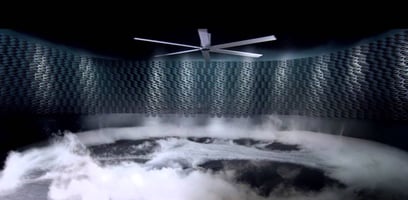Sweating Slab Syndrome (SSS) is a dangerous condition that plagues many warehouses and compromises...
Step-by-Step Guide to Reduce Energy Costs with HVLS Fans
Facility managers save money on energy when they introduce HVLS fans into their facility. The savings are clear, measurable, and constant. Getting there takes a step-by-step approach that starts at the very beginning. To lend expertise on the topic, we interviewed warehouse cooling expert, Jim Stahl. Stahl has brought cost-effective thermal control solutions to large facilities throughout the country.
Step #1 – Face the Facts
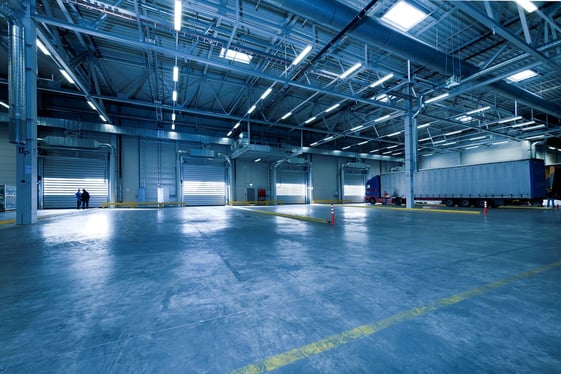
To measure progress, warehouse managers should benchmark the current heating and cooling situation and its costs. That’s easier said than done when your space is hot in the summer, cold in the winter, and subject to blasts of aggressive weather when your bay doors are open.
-
Identify the Comfort Level –
OSHA suggests a climate “range of 68-76° F and humidity control in the range of 20%-60%.” And, ASHRAE Standard 55 recommends that “comfortable” means occupants do not have to change their wardrobe significantly. These guidelines target your facility’s preferred thermal climate.
-
Benchmark the Cost –
Temperature is inconstant and fluid. The costs of energy vary continuously, so it can be hard to nail down your pricing. You can measure cost per square foot, per hour, per office, and so on. However, you may want assistance in determining your actual expenses. Moreover, those numbers may only reveal that you need a better metric.
Step #2 – Fix Known Factors
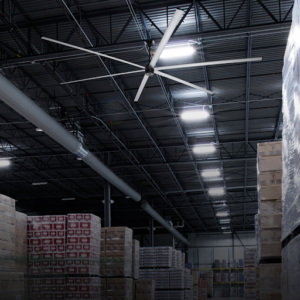
As you address specific known factors, you close in on what your space does or doesn’t need. Once you have a starting line, you can look at usage, structure, and systems. If you can salvage or redesign systems, you save twice.
-
Don’t Turn the Lights Off –
Lights and machines produce heat. The strategic decision to reduce energy costs by introducing more energy-efficient lighting and machinery makes sense. Ironically, this change increases the stress on heating systems because it lowers the temperature. As HVLS fans expert Jim Stahl points out:
“You can leverage ambient heat from ceiling light fixtures. A few strategically placed HVLS fans can capture that heat, destratify the layers, and redistribute it to places where it is needed.”
-
Don’t Upgrade Unwisely –
Cold doors and walls create a cold zone inside. Better insulation and sealants are a good way to go. However, as heat rises, much of it is lost through the roof. HVLS fans will bring that heat down with enough volume to dry floors and surfaces, reconfigure the atmosphere, and rise to the ceiling before starting over again. This reconfiguration cleans, dehumidifies, and redistributes the temperature. Any significant restructuring should include the integration of HVLS technology.
Step #3 – Fix Future Factors
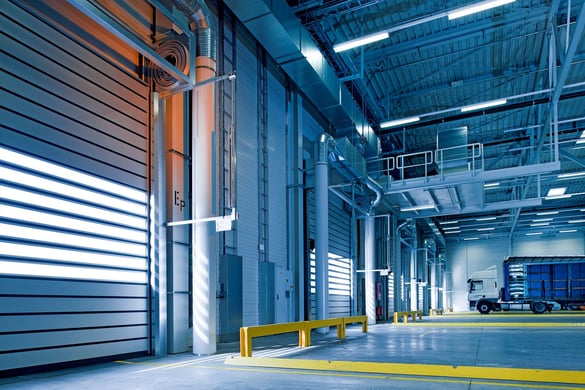
If you can identify the needs and current costs and if you can manage the needs and current costs by re-engineering what you have, you are ready to build a strategy for the future. That strategy should reduce your energy consumption, lower the stress on other systems, and provide a return on investment that you can measure and predict.
-
Cost Your Future –
Weather is fickle and dynamic, and systems must adapt. Duct systems, for example, direct warmed air with diminishing strength as it moves away from the register. HVLS fans can partner with that system to baffle, move, and effectively redistribute that warm air to corners it would never reach. As Jim Stahl says:
“When you feel differences of 20°F or more from floor-to-ceiling or corner-to-corner, a lot of energy is being lost. HVLS fans help you thermally equalize the facility climate.”
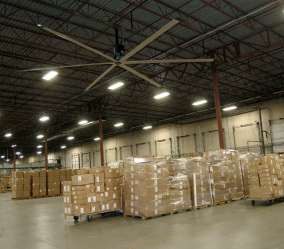
When HVLS fans thermally equalize your facility climate, you can save as much as 20% on energy spending.
-
Fix Your Future –
Jim Stahl recommends HVLS fans to lower your carbon footprint. The broad blade span, aerodynamic engineering, minimal horsepower, and digital “brains” consume little energy and reduce the load on HVAC systems. Once you hang these fans strategically to solve identified needs, you can integrate them with whichever HVAC programs you run.
Summary
Facility managers should look to sensors, thermostats, and air analysis to get a benchmark for energy costs. From there they can reinvent the facility heating response with smarter applications, minimal retooling, regular maintenance, and powerful, versatile HVLS fans. Jim Stahl admits that no two spaces have the same needs. However, HVLS fans offer year-round solutions in any climate. These steps take you toward a strategic solution that includes the maximum cost savings for HVLS fans.
Subject matter expert, Jim Stahl, is well versed in HVAC and holds a Bachelor of Science degree in Business and Technology Management with an emphasis in Applied Science, specifically in HVAC/R Technologies. Jim is the Applications Manager for MacroAir fans, before which he was a Regional Sales Manager. Prior to his role with MacroAir Fans, Jim was the Regional Manager of Technical Services for Wal-Mart Stores, Inc. While at Wal-Mart, Stahl was responsible for the HVAC, refrigeration, and energy management activities for Northeastern stores.
